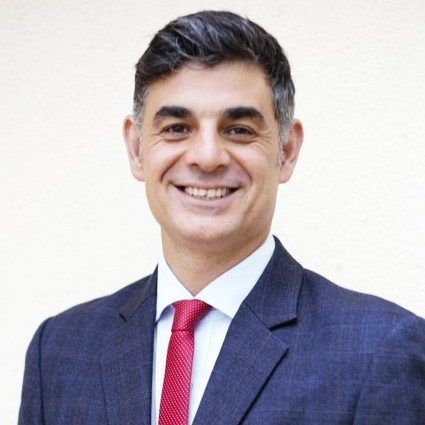Expert interview: Helping agri-food companies in their digital transformation
Natural resources are finite. „70% more virgin materials were extracted than Earth can safely replenish. We must stop this path”, warned Christa Schweng, President of the European Economic and Social Committee (EESC). Innovative technologies, such as digital twins, can help bring about a more resource-efficient agri-food industry in which every resource is used to its maximal potential. At the BBTWINS research project, experts are working on this very objective. Among them is Daniel de la Puente Ranea, an R&D expert in the fields of agriculture, environment and biomaterials. We talked with him about the project BBTWINS and its ties to Model2bio.
Question: What do BBTWINS and Model2Bio have in common?
Answer: BBTWINS’ novelty is, on the one hand, that for the first time different technologies -sensors, computer simulations of food processes, artificial intelligence and blockchain- are put together into one digital twin. And on the other hand, the breakthrough is to develop these digital twins for the pork and peach industry, covering all inputs such as materials, energy, water, etc., all processes and transformations, and all outputs including products, waste, and side streams.
Model2Bio is focusing on identifying and optimizing the best routes to valorize agri-food residual streams across the vegetables, meat, dairy, and beverages industries thanks to a novel decision support system based on mathematical models.
Therefore, both projects are complementary. Model2Bio is an excellent library of mathematical models simulating food and waste processing steps. The digital twins developed by BBTWINS could theoretically incorporate these models to develop more precise simulation of the valorization of waste streams. In addition, both projects describe complex supply and production chains from the field to final products, including the valorization of organic waste streams.

Daniel de la Puente Ranea, R&D Project Manager at Ctic Cita and coordinator of the BBTWIN project
Q: How will you increase biomass availability and lower biomass losses?
A: Digital twins once fully calibrated will be able to virtually replicate the input, processes and outputs of a given industry. By testing different alternative scenarios like volumes, costs, composition, efficiency of single processes, BBTWINS will be able to predict the potential outcomes. Part of this virtual testing is finding out the values of the key variables that may lead to the maximization of a given output or the minimization of selected input. Examples for these are the quality biomass available for revalorization or material consumption leading to waste, respectively.
“This makes digitalization, automation and in general digital transformation three key technological upgrades that can help industries remain competitive.”
Q: BBTWINS will develop and validate two innovative digital twins in two use cases in Spain and Greece. Those areas are also two of the areas where the Model2Bio Decision-Support System Tool will be validated. In your opinion, what are the agri-food trends in those areas?
A: Currently, the economic environment faces high and increasing energy prices leading also to an increase in fertilizers, food processing and transportation costs. Considering this, these two regions have the advantage of warm climate which makes agricultural produce more competitive compared to Central and Northern Europe industries which require intense heating in green houses. Also, Spain and Greece have a lower degree of technification like smart farming and automatization in food processing. This makes digitalization, automation and in general digital transformation three key technological upgrades that can help industries remain competitive in such harsh economic landscapes.
Q: What challenges are you facing to gather all the data necessary to feed the main modules?
A: One key challenge is the complexity of the pork industry selected, PORTESA. It was the perfect choice because their production chain includes four companies of the same business group that cover all steps from the manufacturing of pork feed, growing and fattening of swine, to the slaughterhouse until the final curing facilities for cured meat products in an integrated production. They even own their own cereal fields and fertilizer production, but this agricultural side of the production chain was not included in the project. The complexity of the production chain in terms of number of steps, their interconnections, belonging to different industrial activities subject to specific regulations, and all inputs and outputs is the biggest challenge. However, belonging to the same group, the four companies are interconnected so it’s like having four industries in one single contact point which otherwise would have been completely isolated entities. Finally, communication to get the necessary data is centralized by a team working specifically for BBTWINS, which makes the seemingly impossible just a worthwhile challenge.
“We expect to help agri-food companies in their digital transformation.”
Q: What impacts will BBTWINS solutions have on the agri-food industry?
A: We expect to help agri-food companies in their digital transformation by showing the economic benefits of digitalization of processes, automation, and predictive capabilities of digital twins, including traceability by blockchain. Ultimately, this degree of technification should render industries more competitive by being able to detect inefficiencies, improve what is already working well, anticipate supply or production bottlenecks and save costs in an environment of raising material and energy costs.